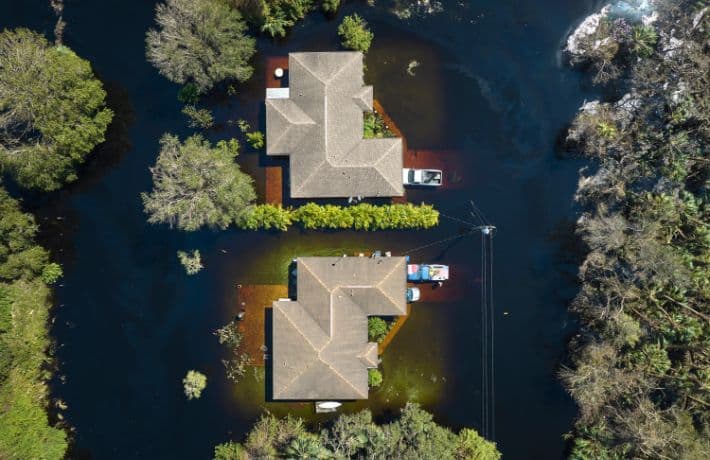New Tool Helps Property Owners Understand and Lower Flood Risk

Reduce Flood Risk, a flood mitigation resource library from the Association of State Floodplain Managers, to be unveiled at ASFPM Conference
Ninety percent of all natural disasters in the United States involve flooding, making flooding the nation’s most common and costly disaster. And the trends are worsening. Fueled by climate change, extreme rainfall events and sea level rise will continue at a frightening pace; putting millions of people in the path of destructive floods.
To help property owners, particularly those in flood-prone areas, understand their flood risk and the most effective flood mitigation strategies for their particular property, the Association of State Floodplain Managers (ASFPM) today launched Reduce Flood Risk (ReduceFloodRisk.org), an interactive flood mitigation resource library.
At the heart of Reduce Flood Risk is a decision-making engine that guides property owners through a series of questions to help them understand their current flood risk and the specific steps they can take to better protect their home or business.
The mitigation options on Reduce Flood Risk can be filtered by key attributes, such as cost, complexity, and level of required maintenance. The site also features a variety of resources on flood risk, flood insurance, financial assistance options, who to contact with questions, and links to more in-depth information and guidance. The site is completely free and users don’t need to create an account to gain access to the resources.
“To the average property owner, flood risk mitigation can feel like an overwhelming task. People often tell us they don’t even know where to start, so they put it off until it’s too late,” said Chad Berginnis, ASFPM executive director. “One of the goals of Reduce Flood Risk is to put people on a path toward understanding their flood risk and arming them with the tools they need to reduce that risk. And for those who think they’ll never flood, keep in mind that 40% of federal flood insurance claims occur outside of high-risk areas.”
Curated resources and custom recommendations
One of the big problems Reduce Flood Risk solves is in simplifying the information-gathering process. Although there are a multitude of mitigation resources available to help individuals and communities reduce their flood risk, most of these resources are scattered across numerous federal and state agency websites, making it nearly impossible for property owners to find specific strategies tailored to the location and features of their home or business.
By curating the best mitigation resources available on the web and creating a centralized, searchable library, Reduce Flood Risk empowers property owners to protect themselves and their most valuable assets.
Funded by the Federal Emergency Management Agency’s (FEMA) Office of the Flood Insurance Advocate, ASFPM developed the Reduce Flood Risk with input from representatives from FEMA, US Army Corps of Engineers, ASFPM committees, and academia.
ASFPM is set to officially launch Reduce Flood Risk on the opening day of its 46th annual conference. Held in Orlando, May 15-19, the conference brings together nearly 2,000 flood risk management professionals from across the country. It’s considered the world’s largest and most comprehensive floodplain management conference, and this year’s theme is Shining Light on Mitigation.
About ASFPM
Founded in 1977, the Association of State Floodplain Managers (ASFPM) is a scientific and educational nonprofit organization dedicated to reducing flood loss in the nation. ASFPM and its 38 chapters represent approximately 20,000 state and local officials as well as other professionals engaged in all aspects of floodplain management and flood hazard mitigation, including management of local floodplain ordinances, flood risk mapping, engineering, planning, community development, hydrology, forecasting, emergency response, water resources development, and flood insurance. Visit www.floods.org to learn more.



